Agatha Christie - Hercule Poirot: The London Case Review
PC
Hercule Poirot: The London Case is a detective game done right, from finding clues to question suspects, the player will feel like a real life Poirot.
Reviewed by MariDead on Aug 29, 2023
Agatha Christie - Hercule Poirot: The London Case is the newest game from Scottish development company Blazing Griffin, a 2015 company made up of 3 different companies who merged together, allowing the company to have many different industries they work in. Not only do they have a few entries in the games industry, they also work in the post-production of both film and TV. The merging of companies allows the companies to work on the same project from different angles, giving a holistic overview of their projects as they work on them. The publishers are Microïds, who have worked on other murder mystery games, including Murder on the Orient Express, a game by Microïds Studio Lyon.
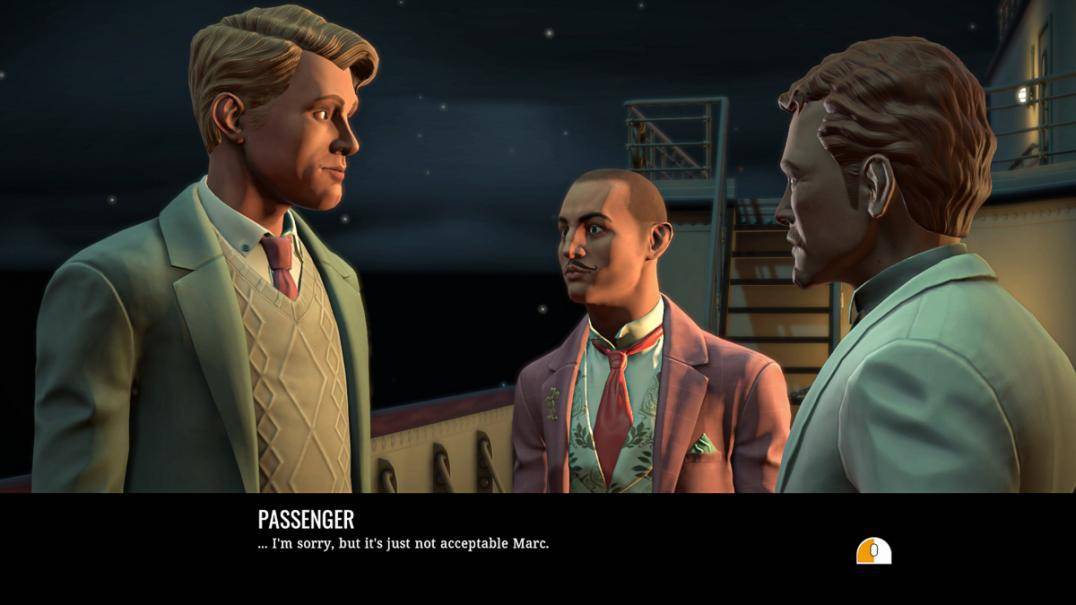
After the success of Agatha Christie: The ABC Murders, the sequel to Agatha Christie - Hercule Poirot: The First Cases, Agatha Christie - Hercule Poirot: The London Case is described as an action-adventure game that is a murder mystery simulator that allows you to experience some of Poirot’s earlier stories. The first game released on the 27th of September 2021, with the follow-up adding to gameplay features and also having an improvement on the graphics when compared to the original.
The story of Agatha Christie - Hercule Poirot: The London Case follows the early cases of Hercule Poirot before he is established as the famed detective he is known as in his later years. The London Case refers to Poirot having to assist in the transportation of a priceless painting to London. The game opens on a boat that the painting is on, with Poirot getting to know the other passengers on board. This section of the game acts as a tutorial for the player to get to know how to solve the cases and the basic mechanics of the game.
Agatha Christie - Hercule Poirot: The London Case features a younger, very swerve Poirot who carries himself with a lot of charm and some amusing one-liners as he interacts with the passengers, looking for the lost cigarette case of a lady on the ship. This case is lost twice, the first time when her luggage is dropped by a porter helping her move to her room, interrupting a conversation between Poirot and Arthur Hastings. It is quickly retrieved and found by another woman on board. These 4 NPCs then become the suspects in the case as the cigarette case goes missing again just a few hours later.
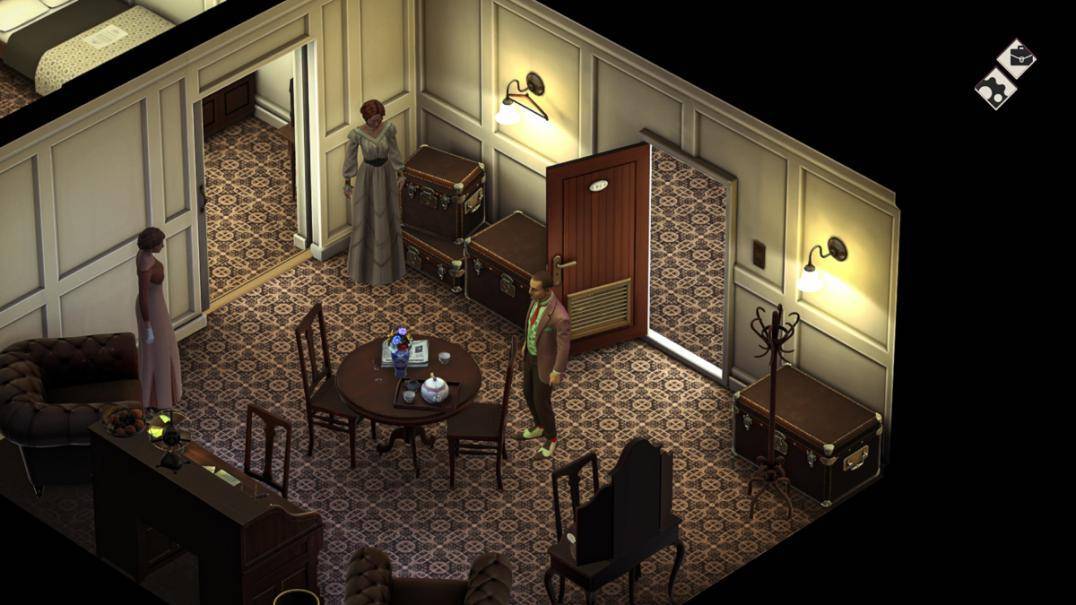
This tutorial takes place in the opening of Agatha Christie - Hercule Poirot: The London Case when the case is lost again, and the player will be able to learn how to solve cases through questioning suspects, linking clues and searching for physical evidence. It is also at this point that Poirot and Arthur Hastings can get to know each other, and the player learns what, of course, Poirot knew the whole time, Arthur is an employee of Lloyds of London who was also responsible for the transportation of the painting. His role as an insurance agent means he understands a lot of the value of items, including the cigarette case.
Once this case has been concluded, the ferry finishes its journey to London, and the painting can be moved to its final destination. Once the painting is “safe” Poirot gets the report that, surprise of all surprises, the painting has been stolen. It is down to Poirot and Mr. Hastings to find the culprit of the stolen painting, gathering a variety of clues to get the painting back and safe in time for the grand reveal.
The gameplay of Agatha Christie - Hercule Poirot: The London Case is kept very simple, with a fair amount of adaptability available for those wanting to play on a controller. Poirot moves around the screen using the WASD keys or by following the mouse as the player clicks around the screen. A controller can also be plugged in that is very compatible with the movement controls, although some of the menu does become a little harder to navigate when not using a keyboard and mouse.
While it is very easy to navigate the game, even with it being possible to move around using just the mouse, adding to the accessibility of the game, it should be noted that Poirot walks around very slowly. This means that there can be a lot of time between questioning suspects or finding the next clue, really slowing the placing of Agatha Christie - Hercule Poirot: The London Case. This can mean the momentum of the game is often dragged to a grinding halt as it takes a long time to wander over to the next clue, potentially ruining the excitement of an amazing, fun “eureka!” moment.

Items are interacted with using the mouse. This includes people who can be questioned as suspects, items that need to be investigated, and objects that can be picked up and used in Poirot’s inventory. It should be noted that the labelling for “Use” and “Interact” can be somewhat confusing for the player. In some cases, they make perfect sense; a character will say “Interact” meaning they can be spoken to and questioned. However, when an item says “Interact” it more often means that Poirot will simply look at the item and comment on it, not interact with it and use objects stored in his inventory to investigate it further.
The “Use” label seems more similar to an “Interact”, with “Interact” simply meaning “Look At”. While this seems as though this shouldn’t be the biggest issue, it can be very annoying for the player to constantly click the incorrect label, be pulled into a quick comment from Poirot, and then press the right one to be pulled into the investigation screen.
Once on the investigation screen, it should be noted that this section of the game is incredibly fun. The first few examples of this include looking over a safe and door handle. The safe is fairly standard, but once the door is investigated, the extent of the investigation in Agatha Christie - Hercule Poirot: The London Case can be explored. This door has scratches around it that can be linked within the clue screen to further the investigation. The scratches also represent the level of mystery that can take place in each case.
These scratches are clearly made with a knife that belonged to one of the suspects, who is known for his drinking habits, making it seem as though he was the one who broke into the room. However, mild spoilers for the tutorial case; the rest of the robbery job was so professional it seems unlikely that a drunk could be the one to complete the rest of the robbery, suggesting he had been framed. This was a wonderful moment to have in the opening case as it shows the cases are more complex than they often originally seem.
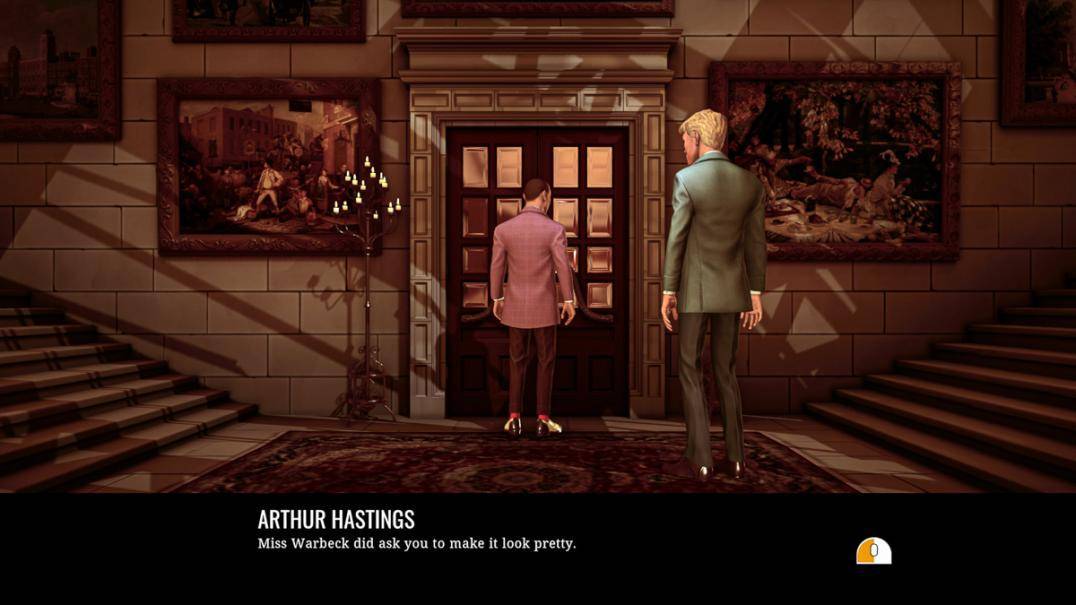
Once this evidence is found, it can be linked to the screen, which allows the clues to be investigated further. This section of Agatha Christie - Hercule Poirot: The London Case is one of the most interesting and cleanly developed. The clues can be dragged to each other, and a conclusion is drawn from them, which Poirot will explain to the player. These conclusions can then be used to re-explore an environment with the new information. Suspects can also be questioned again with the new clues in mind. Some moments when talking to a suspect will ask for the player to pick a specific answer or to defend their reasoning for a specific choice they have given another character.
The opening case works as a fantastic tutorial in an exciting and interesting way. This is a refreshing part of Agatha Christie - Hercule Poirot: The London Case that allows it to stand out among other mystery games that often rely on written tutorials that often take the player out of the story and ruin the flow of the gameplay. Even small moments can allow the player to learn by doing but can provide more clues if needed by the player.
An early example of this is a small compact powder. As you pick it up, Poirot will mention that it looks like an expensive powder with an ornate compact and mirror. Some players will work out right away that this can be used to find fingerprints and identify who they belong to. However, those who do not realise this right away will be able to read the description in Poirot’s inventory that hints heavily that this is what is supposed to be done with the compact.
Some of the object detection can be a little buggy, however. Once an object has been picked up and is in the player's inventory, it is still possible to “interact” with this item, meaning Poirot will make his observations about the item that is no longer there. While not being game-breaking, it can pull a player out of the experience slightly while they are attempting to solve the case.
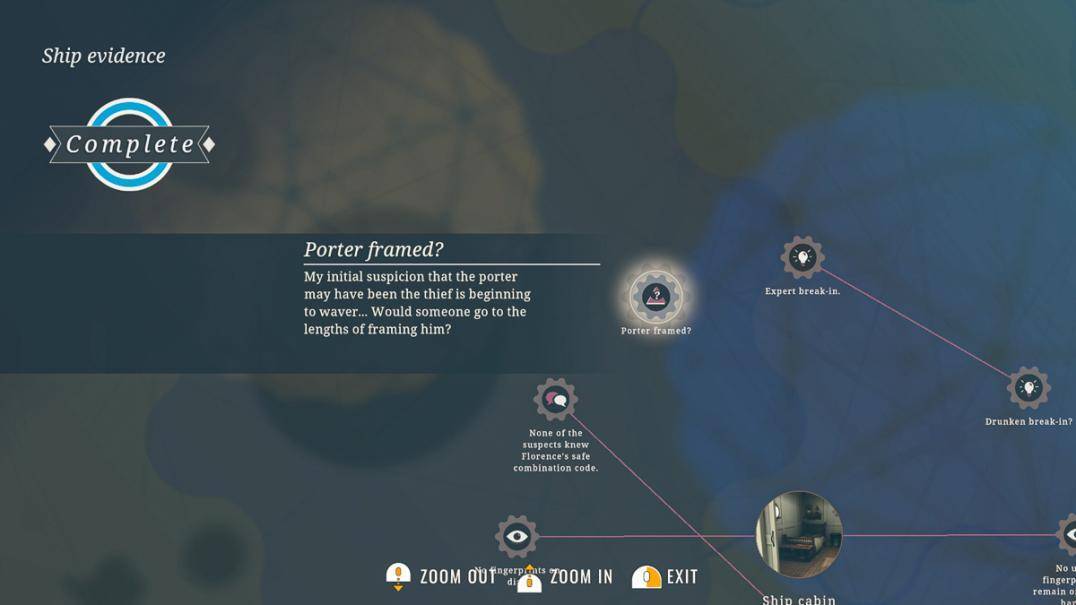
It is possible in Agatha Christie - Hercule Poirot: The London Case to simply click on a person or object and have Poirot walk towards it himself, rather than walking him there manually. This is sometimes flawless, and other times, it leads to him stampeding into everything in his path as he attempts to cross the room. The character model can also spend a lot of time wandering into a doorway the player is attempting to walk through, which can be beyond annoying.
The interesting way in which the space can be explored is also introduced in this opening case. The deck of the ferry is stuck in one orientation, and it isn’t until the case has properly begun that a new mechanic is introduced. Once in a room searching for clues, the player is able to move the camera to view the room from different angles in order to look for more views. This makes for an interesting mechanic as items on the wall will suddenly become available for opening new clues. In one instance, this led to a fairly big jumpscare as the room swung around to reveal a man had been in there the whole time.
Graphically, Agatha Christie - Hercule Poirot: The London Case has made some interesting choices. The environments are all fleshed out and feel like lived-in spaces. The graphics on interactables and objects are advanced enough that the player has an excellent sense of what is in the environment, and anything that looks out of place does so for a reason. Many of the items that have to be inspected are also very advanced. At one point during the game, the player has to determine if a painting is real or fake, and the game does a very good job of making the differences subtle enough to have a challenge, but the difference is still visible.
Despite the really impressive graphics on the hard material, many of the faces leave a lot to be desired. The lip-syncing is pretty much never on time, and determining what a character is feeling through expression alone is near impossible. The art style is certainly unique, and this may be a matter of taste as some could like the character models a lot more; however, the issues with expression would probably be universal.
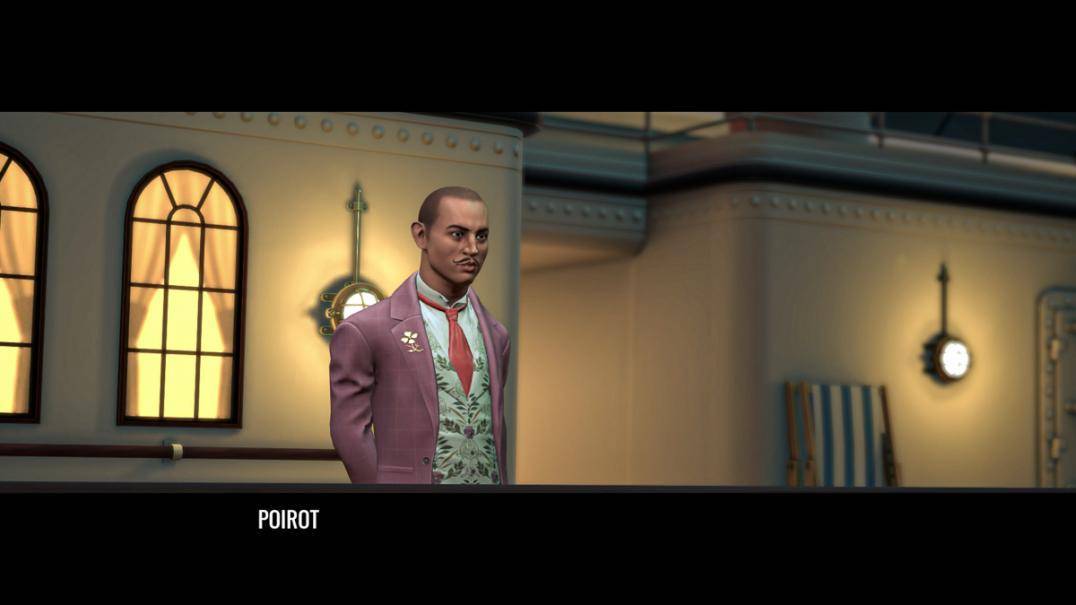
Fortunately, what is lacking in the expression is made up for in the voice acting. Agatha Christie - Hercule Poirot: The London Case is fully voice-acted with an impressive cast. At the end of every piece of dialogue, the player does have to click through to the next sentence themselves with no auto-scroll feature, which can be tiresome, but the voice acting does help make this less so. The rest of the sound design is mostly environmental and does a good job of setting the tone, even if they are fairly simple.
Agatha Christie - Hercule Poirot: The London Case is a fun addition to the murder mystery genre and plays true to the source material with plenty of parlour room scenes that the player helps create. The gameplay is varied, with many interesting choices that add to the immersion. Linking clues and finding physical evidence are all done well and interact with each other in a way that proves the attention that went into these elements of the game. While some of the graphics are a little odd, the overall finish of Agatha Christie - Hercule Poirot: The London Case is very impressive, and Poirot’s quips make for an amusing experience.
Senior Editor, NoobFeed
Verdict
Agatha Christie - Hercule Poirot: The London Case is a fun addition to the murder mystery genre and plays true to the source material with plenty of parlour room scenes that the player helps create.
78
Related News
No Data.

